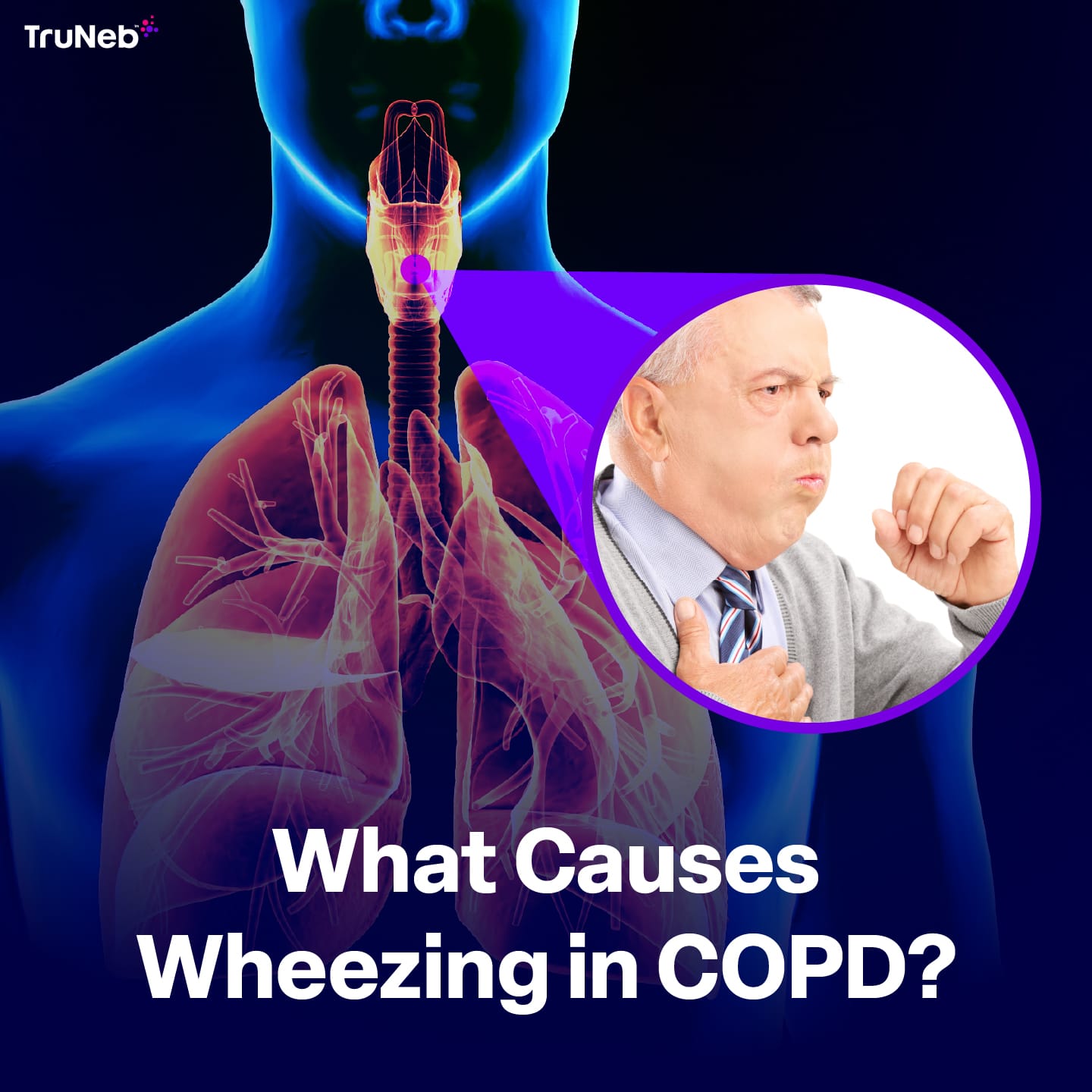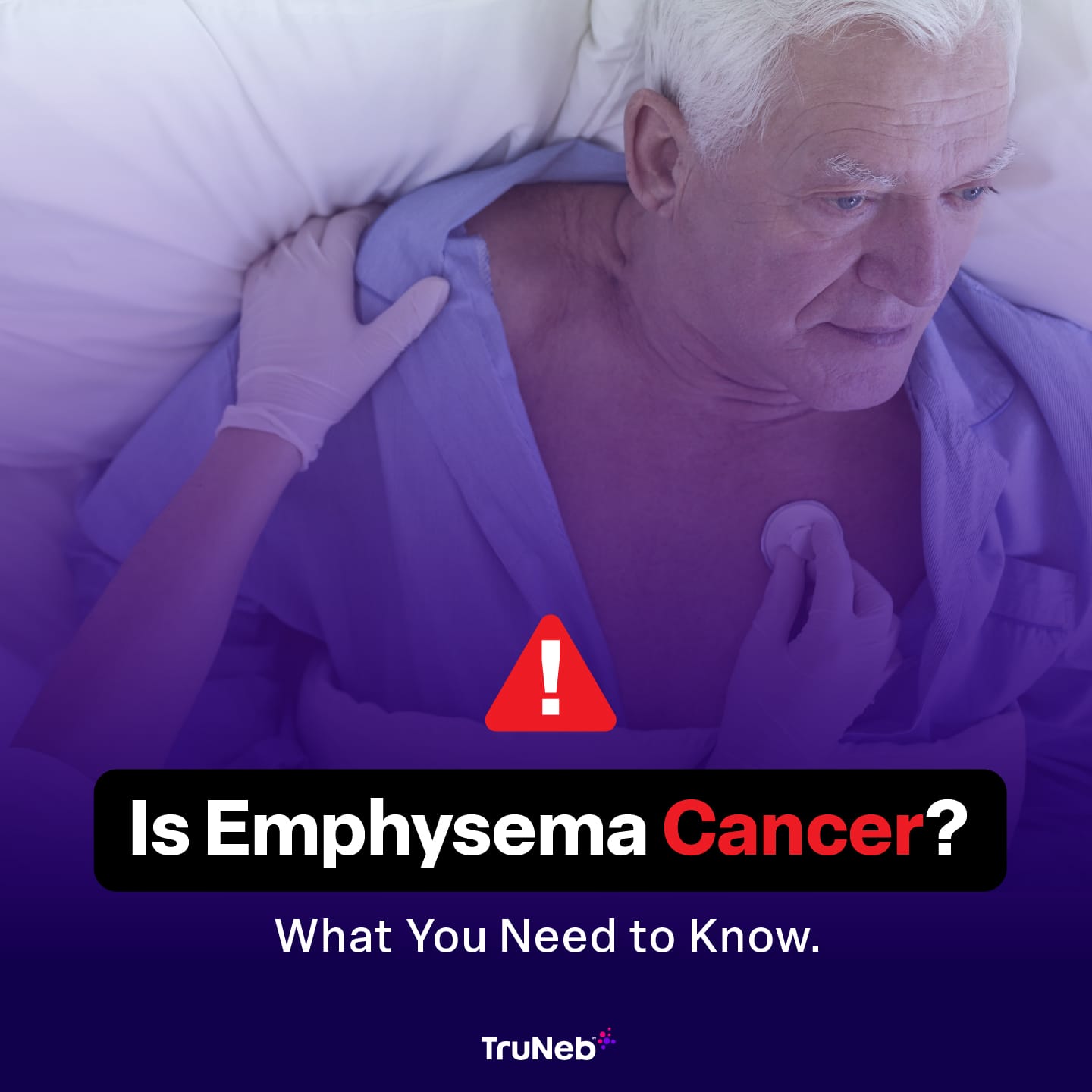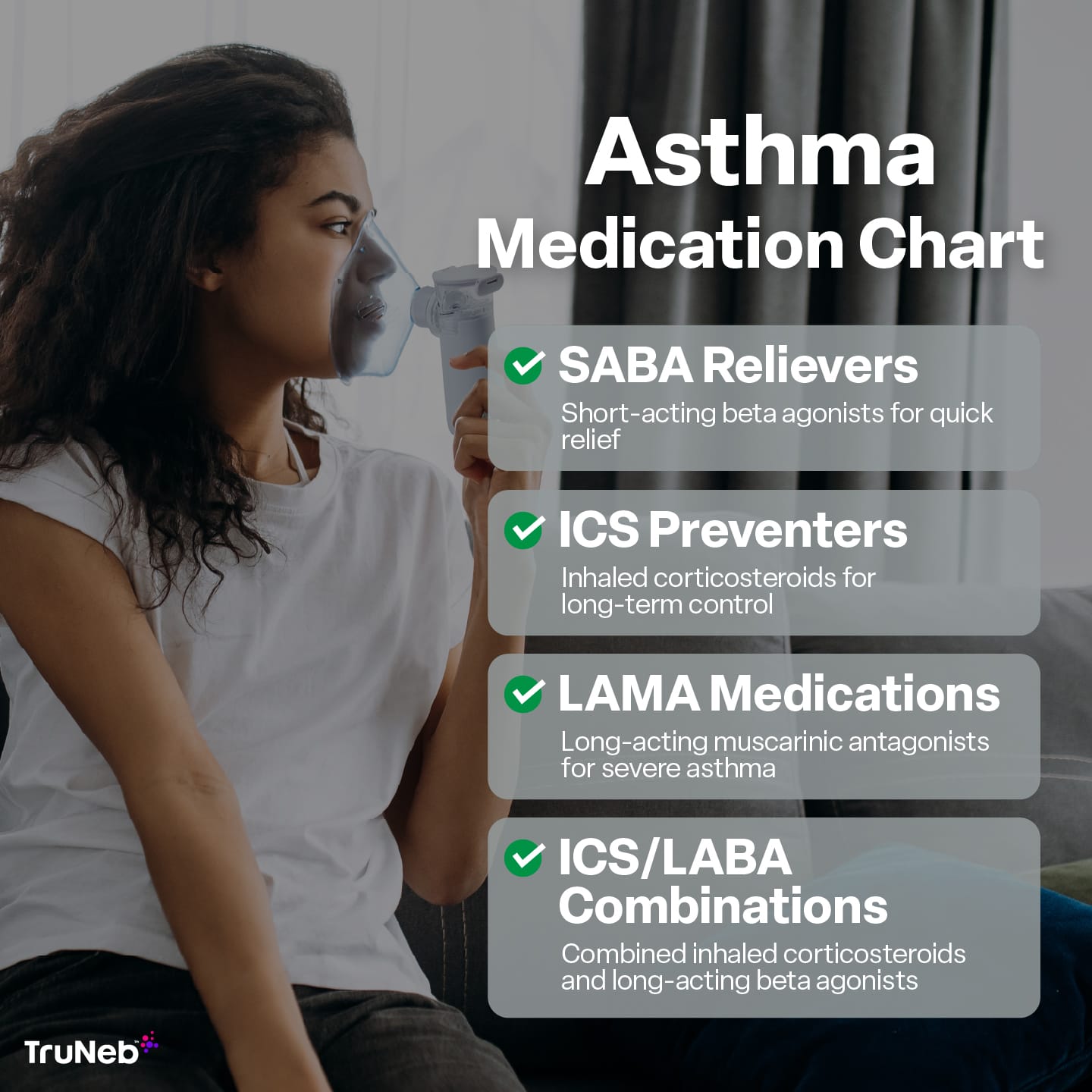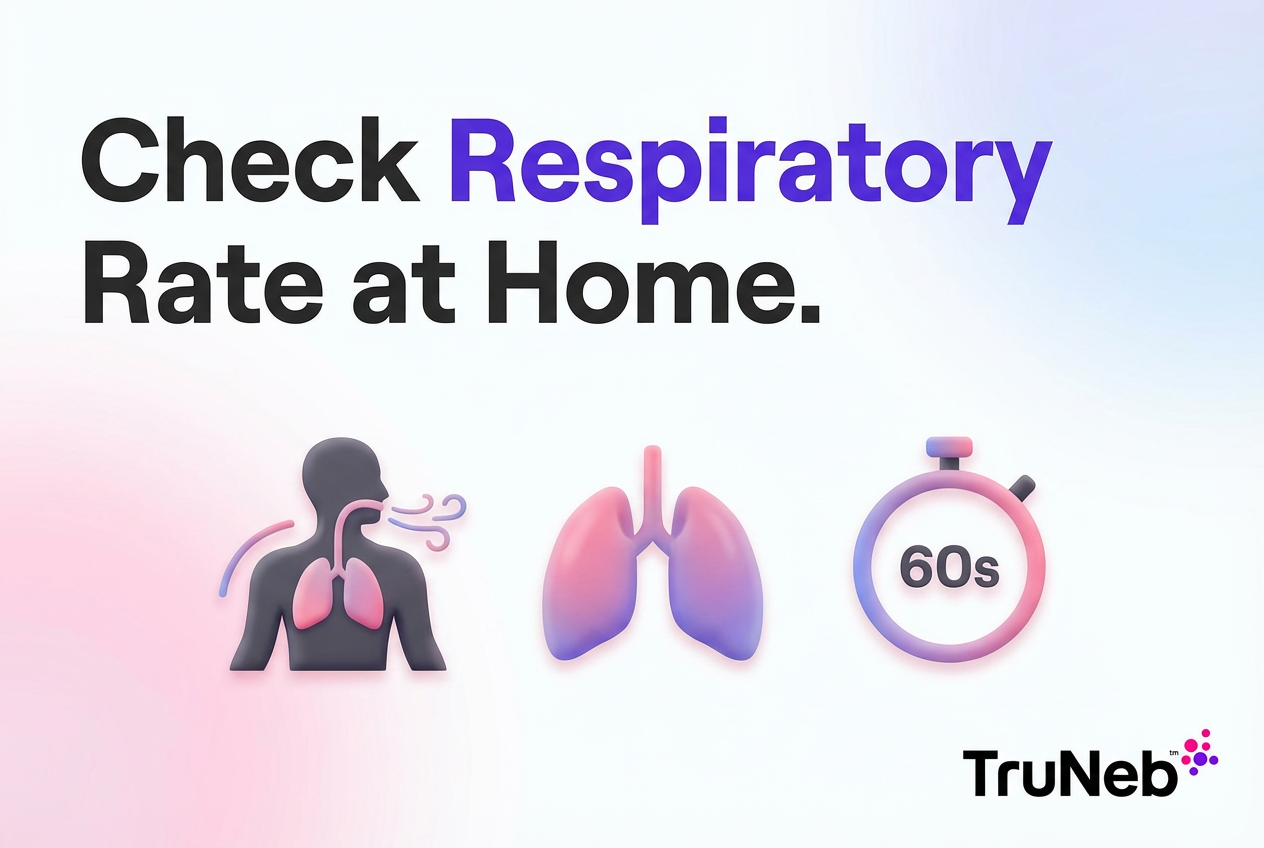On this page

Living with chronic obstructive pulmonary disease (COPD) can be challenging, especially when dealing with annoying and uncomfortable symptoms like wheezing. Understanding what causes wheezing in COPD is crucial for effective management and improving quality of life.
This comprehensive guide will explore the reasons behind COPD wheezing and provide insights into managing this common symptom. We'll review must-knows about COPD, discuss why wheezing happens, and highlight the best treatment options. By the end of this article, you'll have a solid grasp of what causes wheezing in COPD and how to manage it.
Understanding COPD
Chronic obstructive pulmonary disease (COPD) is a long-term, progressive lung disease that makes it hard to breathe. It includes conditions like chronic bronchitis and emphysema, which cause airflow issues and breathing-related problems. COPD is characterized by a persistent cough, mucus production, and shortness of breath.
The main culprit behind COPD is long-term exposure to cigarette smoke. However, environmental pollutants and genetic predispositions can also play a role.
The symptoms of COPD can majorly impact daily life. Common symptoms include:
- Chronic cough: Often with mucus that can be difficult to clear.
- Shortness of breath: Especially during physical activities.
- Wheezing: A high-pitched whistling sound when breathing (usually when exhaling).
- Chest tightness: Feeling of constriction or pressure in the chest.
COPD can lead to complications such as frequent respiratory infections and heart problems. The key issues in COPD are inflammation and airway obstruction. Inflammation causes the airways to swell and produce more mucus, which leads to narrowing and makes it difficult for air to flow in and out of your lungs.
What Is Wheezing?
Wheezing is a high-pitched whistling sound that happens when you breathe. It's most noticeable when you exhale, but it can also happen when you inhale. Wheezing is a sign that something is blocking or narrowing your airways, making it hard for air to move in and out of your lungs like normal.
There are two main types of wheezing:
- Inspiratory wheezing: This occurs when you breathe in.
- Expiratory wheezing: This occurs when you breathe out.
Both types of wheezing are linked to respiratory conditions like asthma, bronchitis, and of course, COPD. Understanding the type and cause of your wheezing can help you and your doctor find the best treatment approach.
Causes of Wheezing in COPD
Wheezing in COPD is common and can be triggered by several factors:
- Inflammation of the airways: Inflammation causes the airways to swell and narrow, making it harder to breathe and leading to wheezing.
- Mucus production and buildup: Excess mucus can block the airways, creating a whistling sound as air tries to pass through.
- Bronchospasm and airway constriction: The smooth muscles around your airways can tighten (bronchospasm), narrowing the passages and causing wheezing.
- Environmental and lifestyle factors: Smoking, air pollution, and other irritants can worsen inflammation and mucus production, leading to more frequent wheezing episodes.
Believe it or not, if you have COPD and you're wheezing, that's actually a good sign! It might sound scary, but wheezing means air is still moving through your airways. When COPD gets really severe, the airways can become so blocked that they go completely silent.
Diagnosing COPD-Related Wheezing
To diagnose the cause of wheezing in COPD, your healthcare provider will start with a clinical evaluation and review of your medical history. They’ll ask about your symptoms, smoking history, and exposure to environmental irritants.
Diagnostic tests can help pinpoint the cause and severity of wheezing:
- Spirometry: This test measures how much air you can breathe in and out and how fast you can blow air out of your lungs. It helps doctors understand the extent of your airway obstruction.
- Chest X-rays and CT scans: These imaging tests provide a better look at your lungs and airways, helping to identify any structural problems or blockages.
Your healthcare provider will use this information to recommend the best strategies for managing your symptoms and improving your breathing.
Treatment Options for COPD Wheezing
When it comes to treating wheezing in COPD, there are several effective options out there:
Medications:
- Bronchodilators: These medications help relax the muscles around your airways, making it easier to breathe. Common bronchodilators include albuterol and salmeterol.
- Corticosteroids: These anti-inflammatory drugs reduce swelling and mucus production in the airways. Inhaled corticosteroids like fluticasone are commonly used for long-term management.
Nebulizer vs. Inhaler:
- Inhalers: Quick and convenient, inhalers deliver medication directly to your lungs in seconds. They're portable and easy to use, making them ideal for emergency relief.
- Nebulizers: Nebulizers, like the TruNeb™ Portable Nebulizer, turn liquid medication into a fine mist that you can inhale over several minutes. They’re especially useful for those who have difficulty using inhalers or need larger doses of medication.

Pulmonary Rehabilitation and Breathing Exercises:
- Pulmonary Rehabilitation: A pulmonary rehab program combines education, exercise, and support to help you manage your COPD symptoms and improve your quality of life. It typically includes supervised exercise training, nutritional advice, and counseling.
- Breathing Exercises: Techniques like pursed-lip breathing and diaphragmatic breathing can help improve lung function and reduce shortness of breath.
Lifestyle Changes and Avoiding Triggers:
- Quit Smoking: If you smoke, quitting is the most important step you can take to slow the progression of COPD and reduce wheezing – no matter how long you’ve been a smoker for.
- Avoid Pollutants: Stay away from air pollutants, such as dust, chemical fumes, and outdoor air pollution. Use air purifiers at home to keep indoor air clean.
- Healthy Diet and Exercise: Maintaining a healthy weight and staying active can help improve your overall lung function, comfort, and stamina.
Managing COPD Wheezing
Effective management of COPD wheezing involves a combination of daily strategies and regular medical care:
Daily Management Strategies:
- Follow Your Treatment Plan: Take your medications as prescribed and use your inhaler or nebulizer correctly.
- Monitor Your Symptoms: Keep track of your symptoms and note any changes or triggers that worsen your wheezing.
- Stay Active: Engage in regular physical activity to strengthen your respiratory muscles and improve lung function.
Importance of Regular Medical Check-ups:
- Routine Visits: Regular check-ups with your healthcare provider are essential for monitoring your COPD and adjusting your treatment plan as needed.
- Early Intervention: Promptly address any worsening symptoms or flare-ups to prevent complications and maintain better control over your condition.
Using Devices like the TruNeb™ Portable Nebulizer for Effective Treatment:
- TruNeb Portable Nebulizer: Our compact, rechargeable nebulizer is perfect for on-the-go treatment. It delivers medication efficiently, making it easier to manage wheezing and other COPD symptoms wherever you are.
Patient Education and Support Resources:
- Educational Materials: Learn as much as you can about COPD and its management. Resources from reputable organizations like NIH can provide valuable information and tips.
- Support Groups: Connecting with others who have COPD can provide emotional support and practical advice. Online forums and local support groups are great places to share experiences and learn from others.
By implementing these treatment options and management strategies, you can effectively control wheezing and improve your quality of life with COPD.
Manage Wheezing in COPD With TruNeb™
Effective management of COPD often includes a combination of medications, lifestyle changes, and the use of devices like the TruNeb Portable Nebulizer. With a sleek handheld design and ultra convenient portability, our easy-to-use device is the perfect addition to your home regimen.
*Article reviewed by a licensed Registered Respiratory Therapist
**Last updated: 7/26/2025







